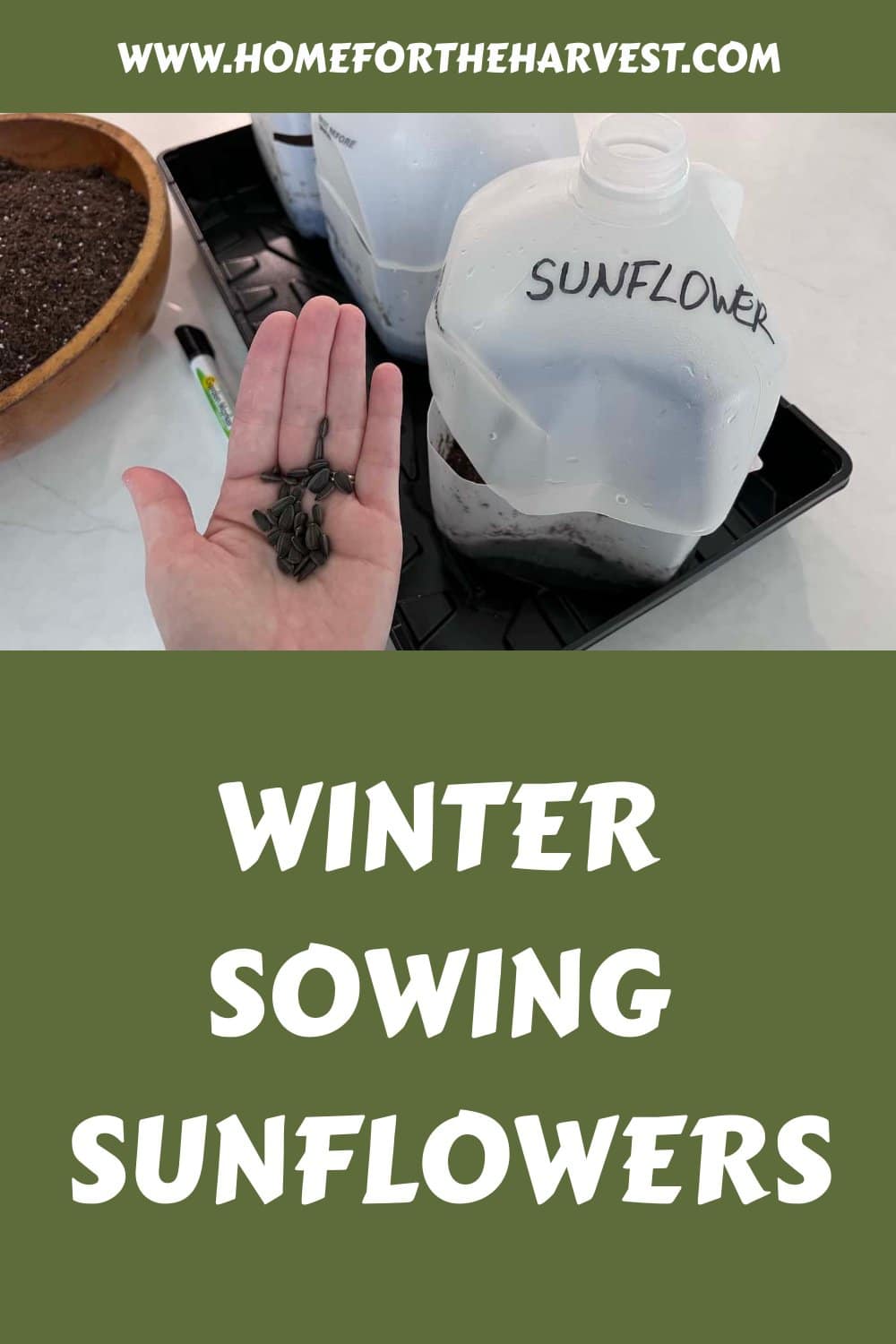Winter sowing sunflowers starts with choosing your sunflower seeds and growing containers. You’ll add some drainage holes to the bottom of a container that hopefully has some sort of transparent cover.
Fill the container with potting mix, plant the seeds, water the container, and place it outdoors in the elements. Sunflower seeds are usually winter sown sometime during January-March.
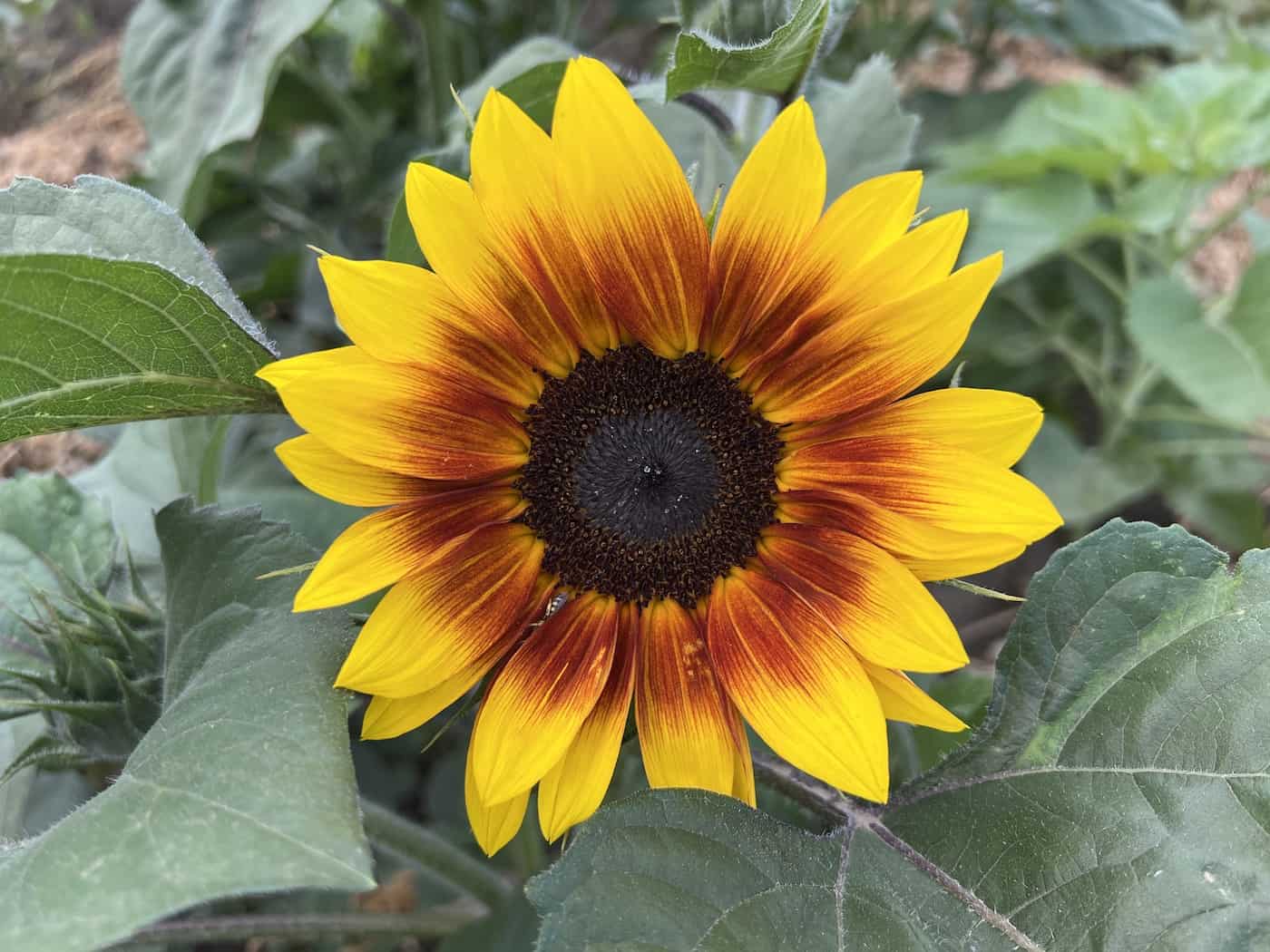
Winter sowing sunflowers
Winter sowing sunflower plants is a great way to get your garden started early in the season. With just a few supplies and some basic steps, you can have beautiful blooms before summer arrives.
For the winter sowing method, you will need plastic containers with lids, potting soil, sunflower seeds, and water. The container should be at least 4 inches deep so that the roots of the seedlings have room to grow without becoming root-bound. Make sure to use a lid on each container as this will help keep moisture inside and protect against frost damage during cold winter months.
Fill each container with potting soil up to about 2 inches from the top of the container, and then add enough water until it is damp but not soaking wet. Sprinkle several sunflower seeds over the surface of the soil in each container and lightly press them into place using your fingers or a spoon handle if needed for larger containers. Cover with an additional layer of potting mix approximately 1/4 inch thick and mist lightly with water again until damp but not soaked through completely; this helps ensure good contact between seed and soil, which aids germination rates later on when temperatures are warmer outside.
Once all containers are prepared, they can be placed outdoors in an area that receives full sunlight for most of the day, such as near windowsills or balconies facing southward towards direct sunlight exposure throughout much of daylight hours during springtime months (March-May). Don’t place them under covers such as beneath eaves or other sheltered areas where they won’t get precipitation. That said, you can shelter them from strong winds, which could cause damage to young seedlings developing within their confines.
Once temperatures begin warming up around mid-springtime (April/May), you should start seeing signs of life emerging from within these little plastic greenhouses – tiny sprouts pushing their way outwards towards warmth and light. At this point, you’ll want to remove any lids covering your containers so that air circulation is improved as temperature increases.
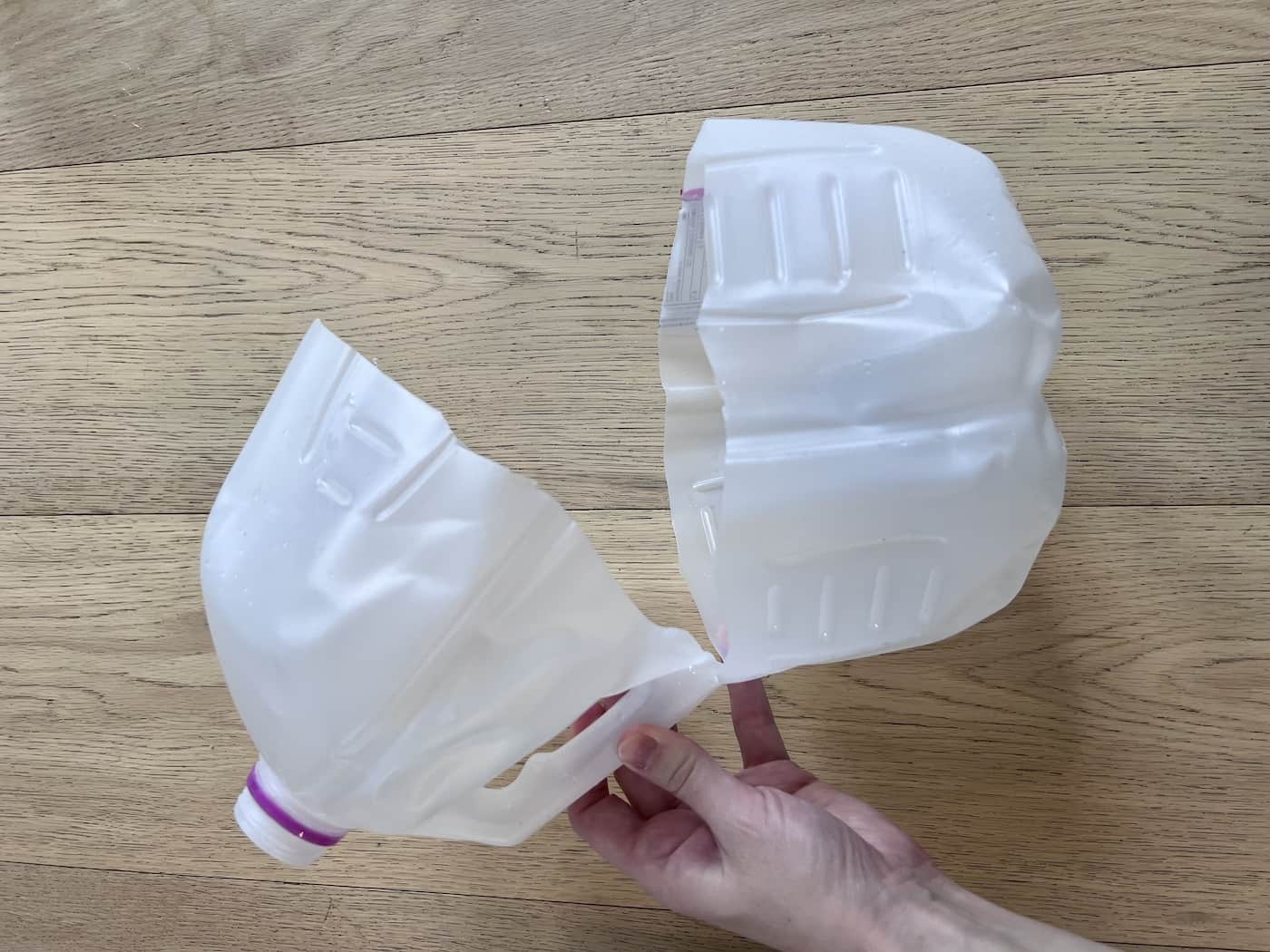
Supplies for winter sowing sunflower seeds
Before you can begin winter sowing sunflowers, you’ll need to gather the necessary supplies. Plastic containers such as milk jugs or soda bottles, potting soil, and sunflower seeds are the most important items. You will also need a pair of scissors or a knife for cutting holes in the containers.
You should choose containers that are large enough to accommodate your seedlings when they have grown several inches tall. Milk jugs and soda bottles work well because they provide plenty of room for roots to grow without becoming root-bound. Make sure the container has at least one hole in the bottom so excess water can drain out easily. If there is no hole in the bottom, use a sharp object like scissors or a knife to cut one into it before planting your seeds.
Next, fill each container with potting soil until it is about two-thirds full. This will give your seedlings enough space to spread their roots once they start growing taller and wider. Be sure not to overfill; too much soil can cause waterlogging which could lead to fungal diseases and other problems for your plants down the line.
Finally, sprinkle some sunflower seeds on top of the soil in each container – but don’t go overboard. Too many seeds will make it difficult for them all to germinate properly due to competition from other plants around them for resources like light and nutrients from the soil itself.
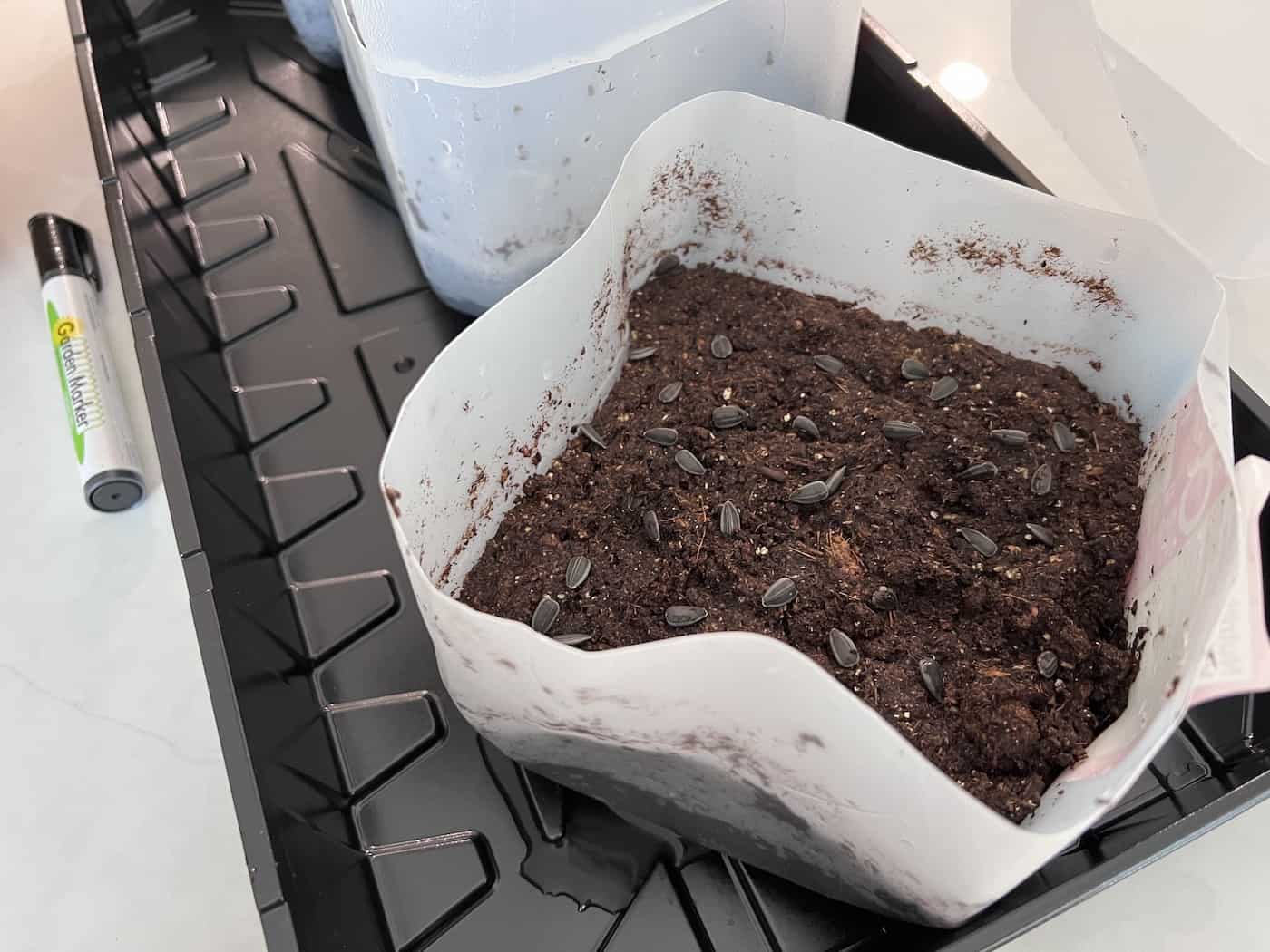
Preparing the growing containers
When it comes to winter sowing sunflowers, preparing the containers is a crucial step. To get started, you’ll need a plastic container with a lid that can be cut off. Make sure the container has several small holes in the bottom for drainage. Once your container is ready, fill it halfway with moist potting soil.
You can also consider adding some fertilizer to the mix to give your seedlings an extra boost once they start growing. Finally, make sure you label each container so you know what type of flower will be growing inside.
Planting the sunflower seeds
Now that the growing containers are ready, its time to plant them. If you want to ensure success when planting your sunflowers this way, use good-quality potting soil and high-quality seeds from a reputable source such as one of these top seed companies.
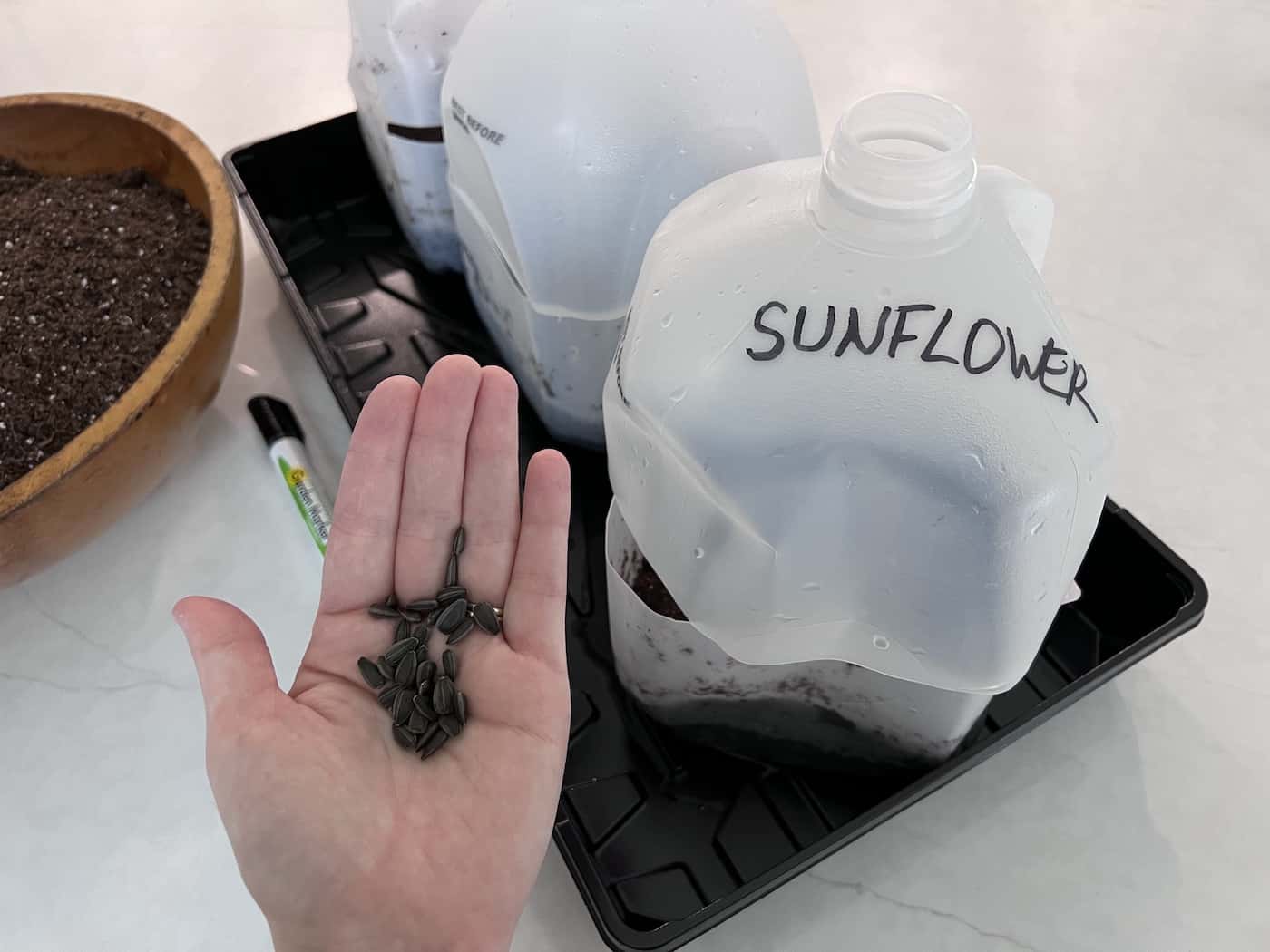
Add your sunflower seeds on top of the potting mix. It’s usually best to put a few in a container, but you can add lots of seeds if you’re more interested in watching the process and don’t mind if the seedlings get a bit of transplant shock from root disturbance. Cover them with an additional layer of soil and lightly water until moist but not saturated.
Placing the planted containers outdoors
Placing your containers outdoors is an important step in winter sowing sunflowers. It’s best to place them in an area that receives at least 6 hours of direct sunlight each day, as this will help ensure the seeds germinate and grow properly. If you live in a colder climate, it may be beneficial to choose a south-facing location so that the seedlings get more warmth from the sun. Make sure to place your containers away from any areas where they could be disturbed by animals or people, as this can disrupt their growth process. They should be in an area where rain and snow can reach them.
It’s also important to consider wind when placing your containers outside. Sunflower seedlings are delicate and can easily be damaged by strong winds or gusts of air, so make sure you find a sheltered spot for them if possible. You should also avoid placing them near trees or other tall plants that could block out some of the sunlight or precipitation they need for proper growth.
Caring for seedlings as they grow
Caring for seedlings as they grow is an important part of gardening. As the temperatures begin to warm up in springtime, you’ll need to start thinking about how best to care for your sunflower seedlings. Here are some tips on how to ensure that your sunflowers get off to a strong start:
Sunflower seedlings need plenty of water in order to thrive. Make sure you check the soil regularly and water when it feels dry. Hopefully, they get enough rain/snow that you don’t have to water, but sometimes supplemental water is required. If possible, use rainwater or filtered tap water instead of hard tap water, which can contain too much salt or chlorine for young plants. Gently drip it into the containers or place them in a basin of water rather than spraying it inside the container and disturbing the soil bed.
Sunflowers love sunlight. Place containers with sunflower seedlings in a sunny spot where they will receive at least 6 hours of direct sunlight each day. If necessary, move them around during the day so that all sides get equal amounts of light exposure throughout the day.
Properly caring for your seedlings as they grow is essential to ensure their healthy development and eventual transplanting. Now let’s look at the process of transplanting sunflower seedlings.
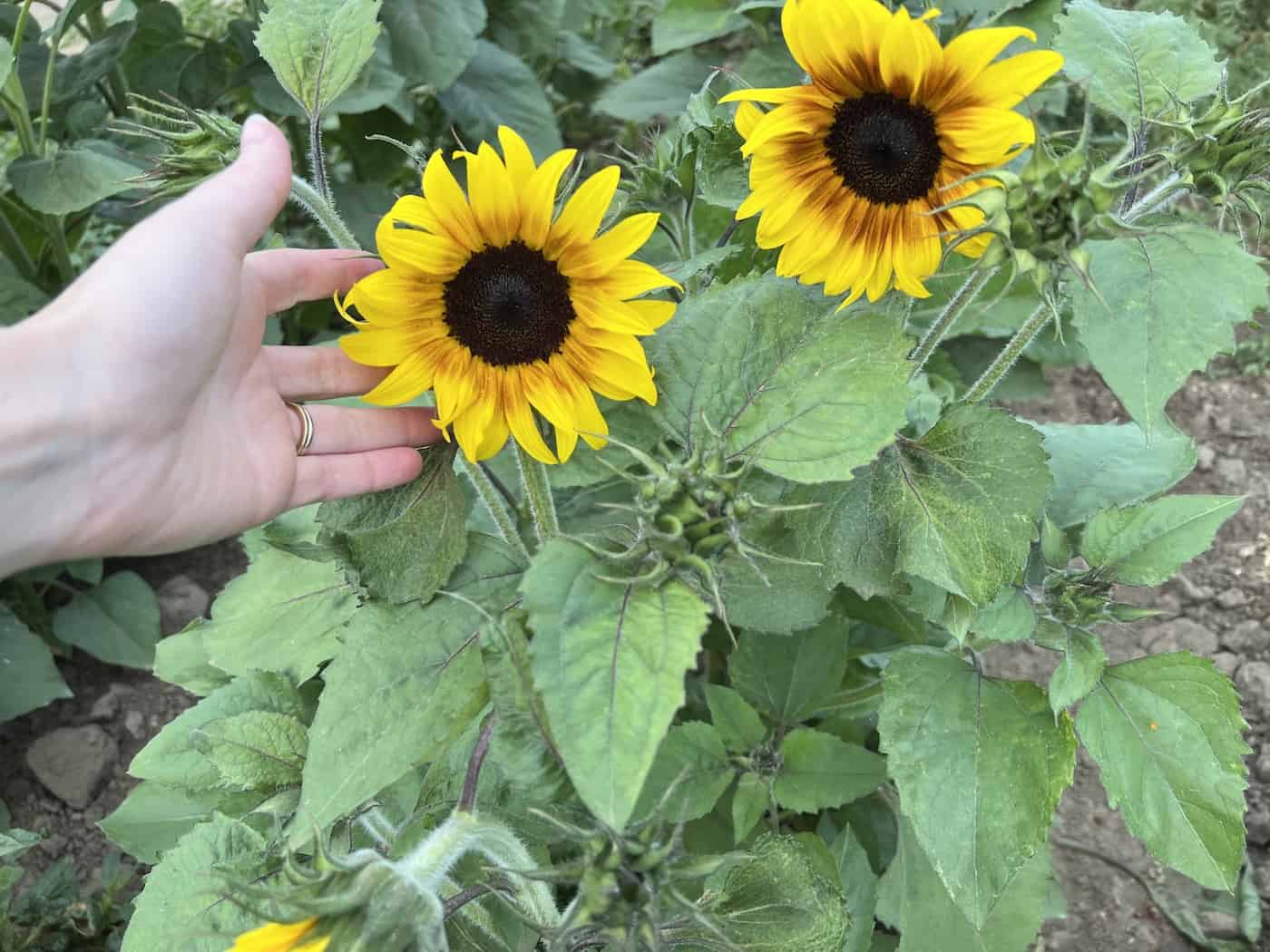
Transplanting sunflower seedlings
Once your sunflower seedlings have grown large enough, it’s time to transplant them outdoors. Transplanting is a delicate process that requires patience and care. Before you begin, make sure the soil outside is warm enough for the seedlings to survive and thrive. If not, wait until temperatures are more suitable before proceeding.
To start, prepare an area in your garden with well-draining soil that receives at least six hours of direct sunlight each day. Dig holes twice as wide as the root ball of each sunflower seedling and deep enough so they can be planted at their original depth or slightly deeper if needed. Gently remove each seedling from its container by squeezing the sides while supporting the base of the stem with one hand, then place it into its new home in your garden bed.
Backfill around each plant using some of the dirt you removed when digging out its hole; then, water thoroughly to help settle any air pockets that may exist around roots or stems. Finally, mulch lightly over top of the soil to help retain moisture levels during hot summer days ahead—but avoid piling up too much mulch against stems since this could lead to rot or other diseases down the road.
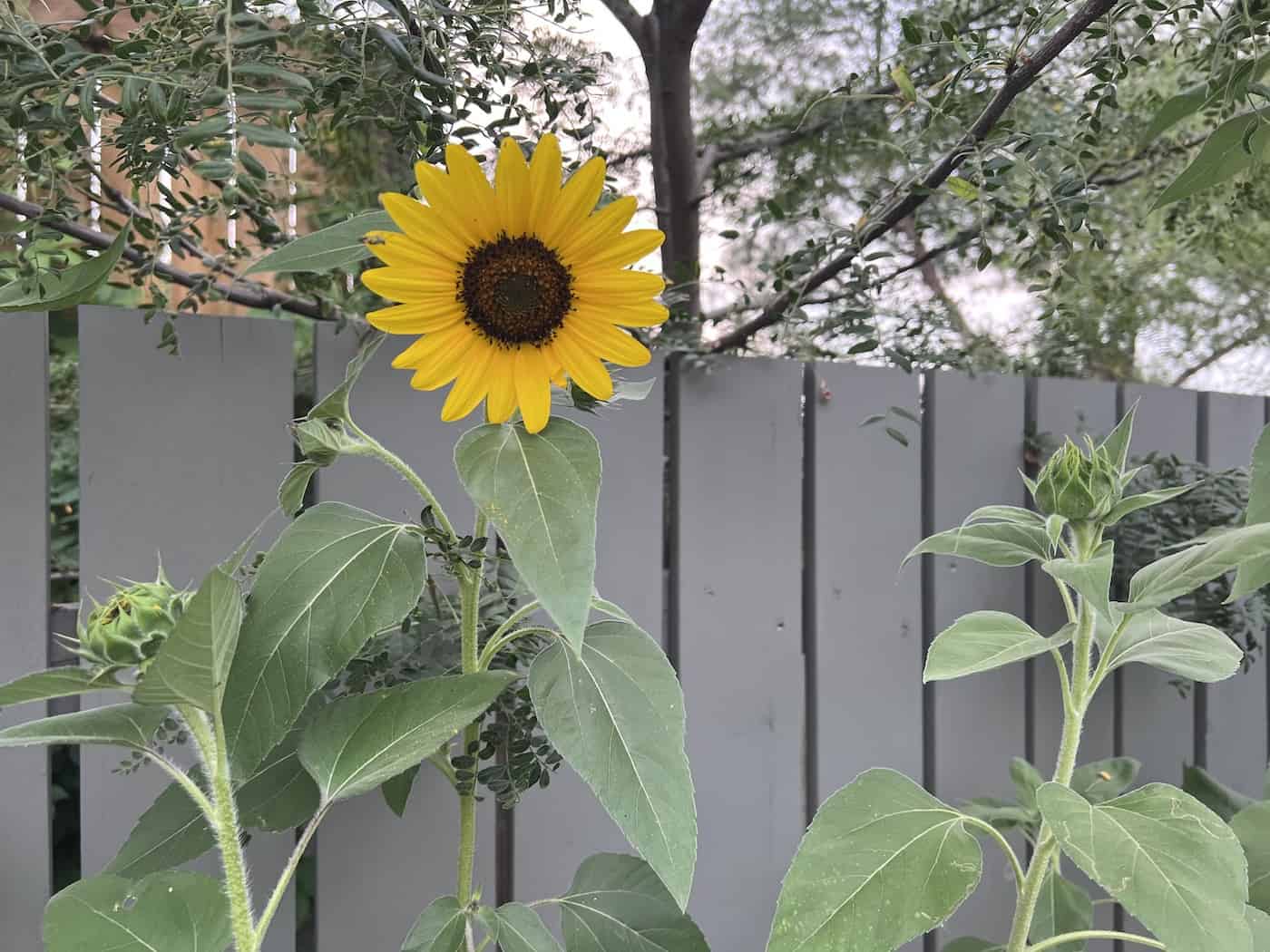
Caring for transplanted sunflower seedlings
Sunflowers require regular watering throughout their growing season (spring through fall). Water deeply but infrequently—once every week should suffice unless there’s been no rain for several weeks—and always check soil moisture levels first before adding additional water just in case conditions are already wetter than normal due to recent rainfall events. Additionally, watch for pests such as aphids that can cause damage if left unchecked; use insecticidal soap sprays or neem oil solutions as needed for control measures if necessary.
Fertilizing your sunflowers is also important if you want them to reach their full potential size. Use a balanced fertilizer few weeks once they have been transplanted into the ground outdoors. Avoid overfertilizing, as this can cause root burn and other damage to young plants.
Pruning away dead leaves and flowers helps keep your sunflowers healthy by allowing more air circulation around them and preventing diseases from spreading between plants quickly through damp conditions caused by overcrowding foliage. Additionally, deadheading spent blooms on branching varieties encourages new growth, which will lead to more vibrant flowers come summertime.
Weeding and mulching are also important for the health of your sunflowers. Make sure to pull out any weeds growing near them before they become established, especially those that produce seeds like dandelions. Adding mulch around the base of each plant can help retain moisture while keeping weeds at bay as well.


